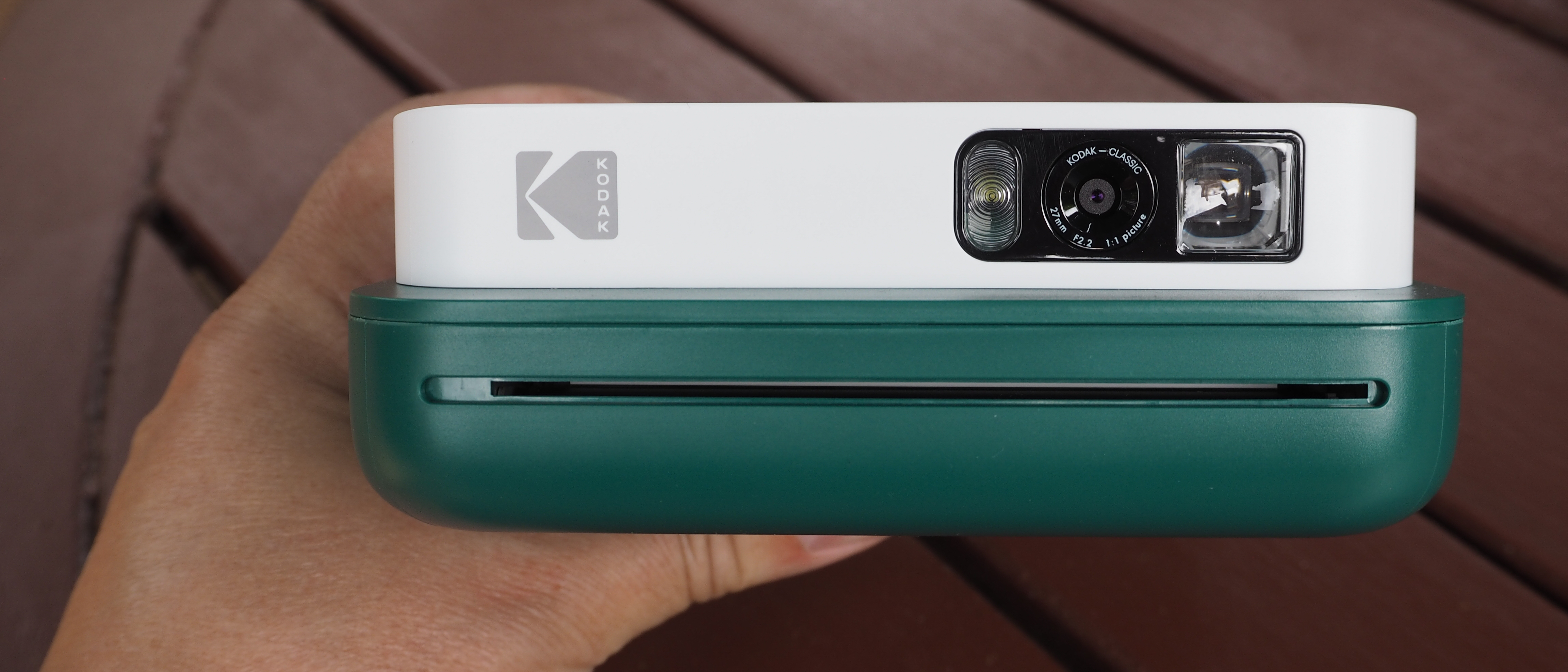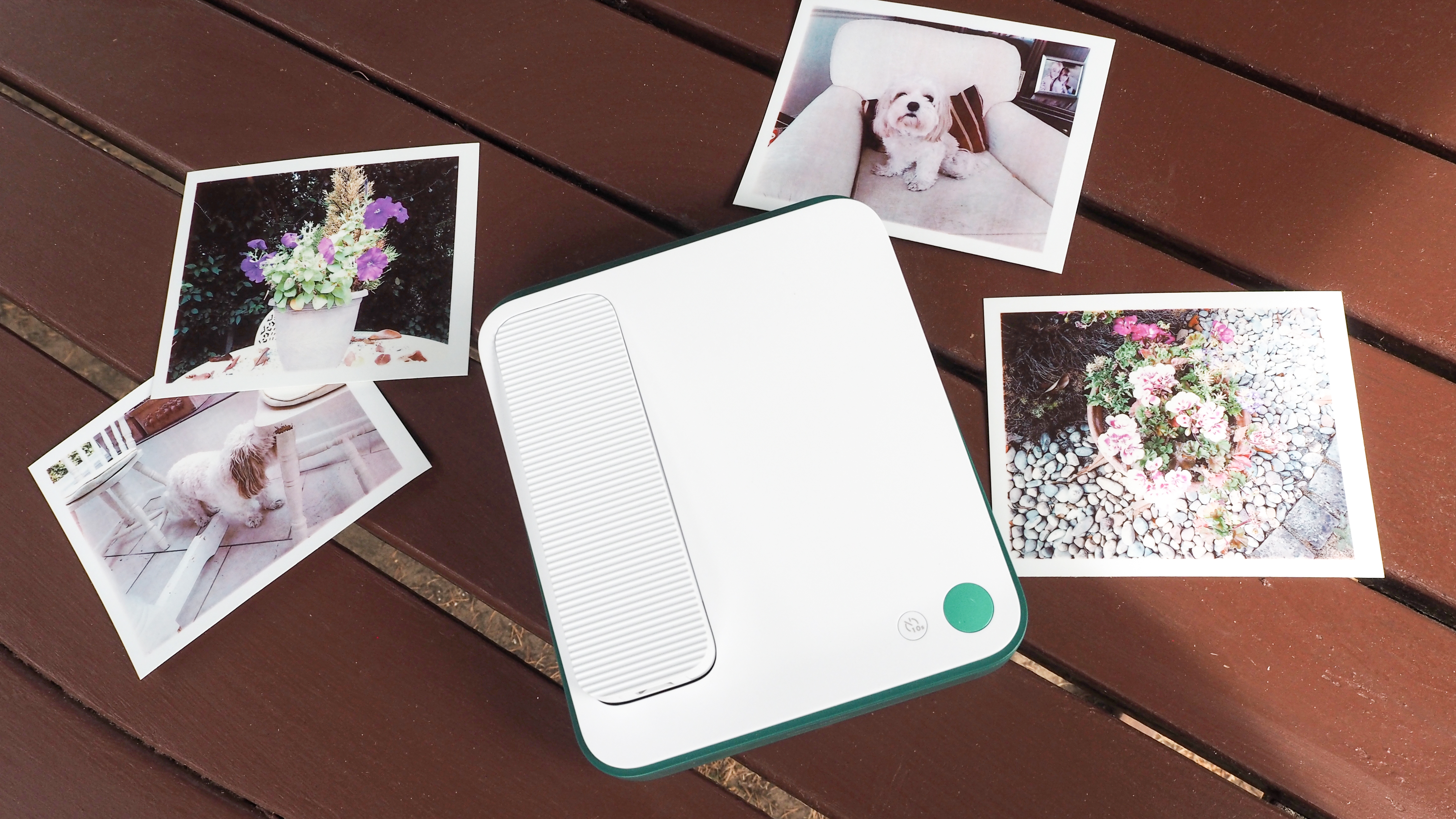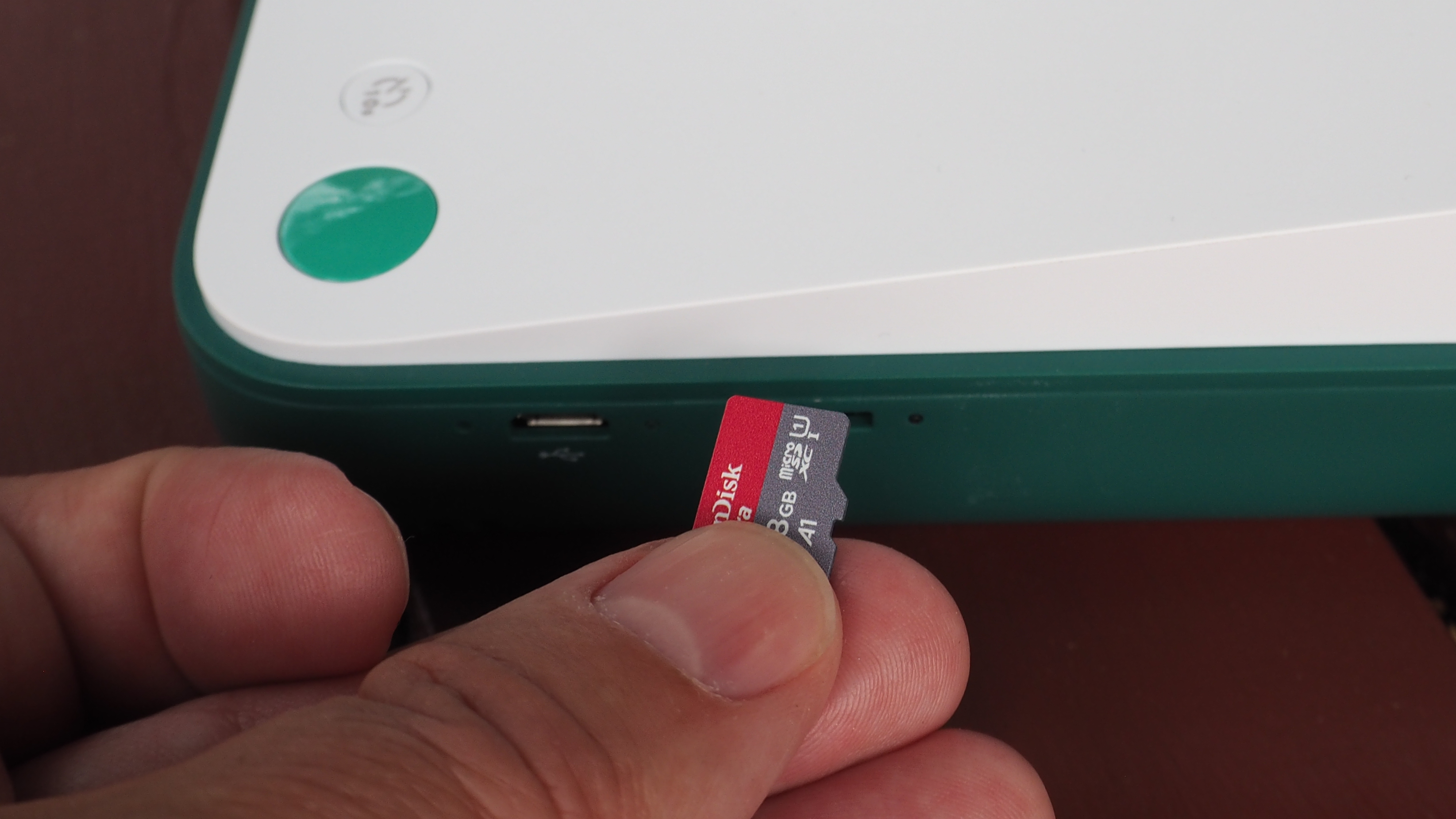Digital Camera World Verdict
Find the credit card sized prints output by most contemporary instant print devices a bit small? Then you’ll relish the fact the Kodak Smile Classic delivers beermat-sized prints closer to what we remember from Polaroid cameras of old, using dry-to-the-touch ‘Zink’ zero ink technology. We also get the ability to send images from our smartphones to the device for print, and to store snaps via optional microSD card. In all, what we’re getting in theory here is something of a ‘best of both worlds’ hybrid analog and digital device, though in practice the actual capture / print quality is disappointing.
Pros
- +
Bigger sized prints closer to the Polaroid output of old
- +
Dry to the touch ‘Zink’ zero ink technology
- +
Compatible smartphone app allows for printing of images direct from our handset
Cons
- -
Output quality is closer to that of a photocopy than a genuine lab print
- -
Plastic-y camera construction makes us nervous about accidental drops
- -
No preview/review screen
- -
Rechargeable battery life good for ‘just’ 35 prints
Why you can trust Digital Camera World
It’s easy to see the appeal of instant print cameras – namely instant gratification. Plus, the delivery of hard copy images without the faff of buying ink for the home printer, uploading pictures to an online portal, or even taking the bus into town to visit the local photo shop or mini lab.
Though they went out of fashion for a while with the introduction of digital photography in the late 90s – thanks to digital letting us review what we’d just shot within seconds, rather than the minute or so an ‘instant’ print took to fully develop – they are now back seemingly with a vengeance. Fujifilm’s Instax range has turned around the fortunes of that particular company, Canon also has its own pocket-sized model, and the Polaroid brand continues to enjoy a resurgence…which brings us to the camera-slash-printer we’re reviewing here.
Like Fujifilm, Kodak was globally renowned for its pre-digital era expertise in film, so it’s no surprise to see the name back and adorning the Kodak Smile Classic instant print camera. The word ‘classic’ of course plays to the brand’s long and distinguished heritage – and there is still a lot of value to be mined from the reassuring and respected Kodak name by the current license holders.
Specifications
Sensor: 16 megapixels
Sensitivity range: Automatic
Video: N/A
Lens: 27mm, f/2.2
The best camera deals, reviews, product advice, and unmissable photography news, direct to your inbox!
Monitor: N/A
Viewfinder: Optical
Battery life: Up to 35 prints
Dimensions: 125.5x150x47.8mm
Weight: 408g
Key features
Interestingly the box for the Kodak Smile Classic sandwiches the word ‘digital’ between ‘instant print’ and ‘camera’. This nods to the fact that, via a combination of downloadable app and built-in Bluetooth connectivity, smartphone users can ‘send’ images from their camera rolls to be printed on the device, as well as edit, adjust and apply effects. As a further indication of its capability as a two-in-one hybrid 'digital instant camera' device, this fixed focus, automatic flash incorporating camera is also microSD card compatible – though we’ll have to provide our own card.
The printer part of the camera works with Kodak branded ‘zero ink’ – Zink – photo paper, which like all media for this and competing instant print cameras, arrives in a pack of 10 sheets, the difference here being that they are larger in size than the credit card output of rival models, in being a close match for consumer-level Polaroid prints of old at a stated 3.5x4.25-inches in size. That’s the largest size Kodak offers in its instant print range.
Another difference here is that the prints are sticky-backed, so that, yes, if we want to, we can use them as stickers, without them feeling any flimsier to the touch than standard instant prints. There’s appeal, therefore, for both the old and young from this camera and mobile printer combo. A starter pack of 10 sheets is included with purchase.
Rather than having to load a handful of AA batteries for power here, the Kodak Smile Classic features a built-in lithium ion pack, which can be recharged by connecting the provided USB cable – though we have to supply our own USB compatible mains plug.
Versus
Fujifilm, Polaroid, Canon and Lomography all offer competing instant cameras as an alternative to the Kodak Smile Classic - and for hybrid devices, see our guide to the best digital instant cameras.
If we’re looking to avoid the small credit card sized prints that most competitors output, however, it may be best to train your attention on the likes of the Fujifilm Instax Wide 300 and the Lomo Instant Wide, which, as they sound, both use the same wide(r) format Fujifilm Instant Wide film packs.
Like the bigger-than-average output from the Kodak Smile Classic, what we also get from these Lomography and Fujifilm rivals is something satisfyingly close to the Polaroid prints those of us who grew up during the instant camera booms of the 1970s / 80s will be familiar with.
Build & handling
A lot more compact and streamlined than either the Fujifilm Instax Wide 300 or its Lomography alternative for those looking for larger format instant prints, the Kodak Smile Classic resembles a compact foot pump in appearance, roughly the width of a CD jewel case and with an inevitable design nod to the looks of a classic Polaroid model. Hence ‘classic’ here refers to the Kodak’s looks rather than its performance.
Its relative compactness and flat profile is in part due to the optical viewfinder being of the pop-up variety; switch the camera on via a small lever on the side and said viewfinder springs up with a satisfying ‘clunk’. That said, the size of such instant print devices is always tied to the size of the prints that emerge from them – meaning that these aren’t pocket sized devices. So you’ll need a camera bag of sorts to transport this Kodak in, though alternatively a wrist strap is provided in the box.
The Kodak Smile Classic provides a tiny 27mm, f2.2 aperture prime lens at the front, alongside an equally small and narrow window for the flash and marginally larger viewfinder window. There’s no review screen provided here, so it’s a case of ‘point and hope’ when taking pictures, which is arguably all part of the fun of an instant camera – as we don't have to wait inordinately long to view the results. A 10 second timer button is provided next to the shutter release atop the camera for anyone attempting group or self portraits, with the prints themselves taking approximately a minute to fully emerge after the shutter release is pressed.
Utilizing its fixed focus lens, meaning that all users have to do is point and shoot, if we insert an optional microSD card of up to 256GB capacity into the slot on the camera’s side we can save 16 megapixel resolution images to be later downloaded to our desktop, or indeed printed at some point in the future. We found it a bit fiddly to insert the card into the slot, however, and it took a few goes to line both up, and to avoid a jam.
Despite the plastic nature of the camera’s construction it feels relatively robust in the palm, though we can imagine the whole thing shattering if, heaven forbid, it were to be accidentally dropped from waist height onto tiles or concrete. So there will be supervision required if handing this to the little ones.
Performance
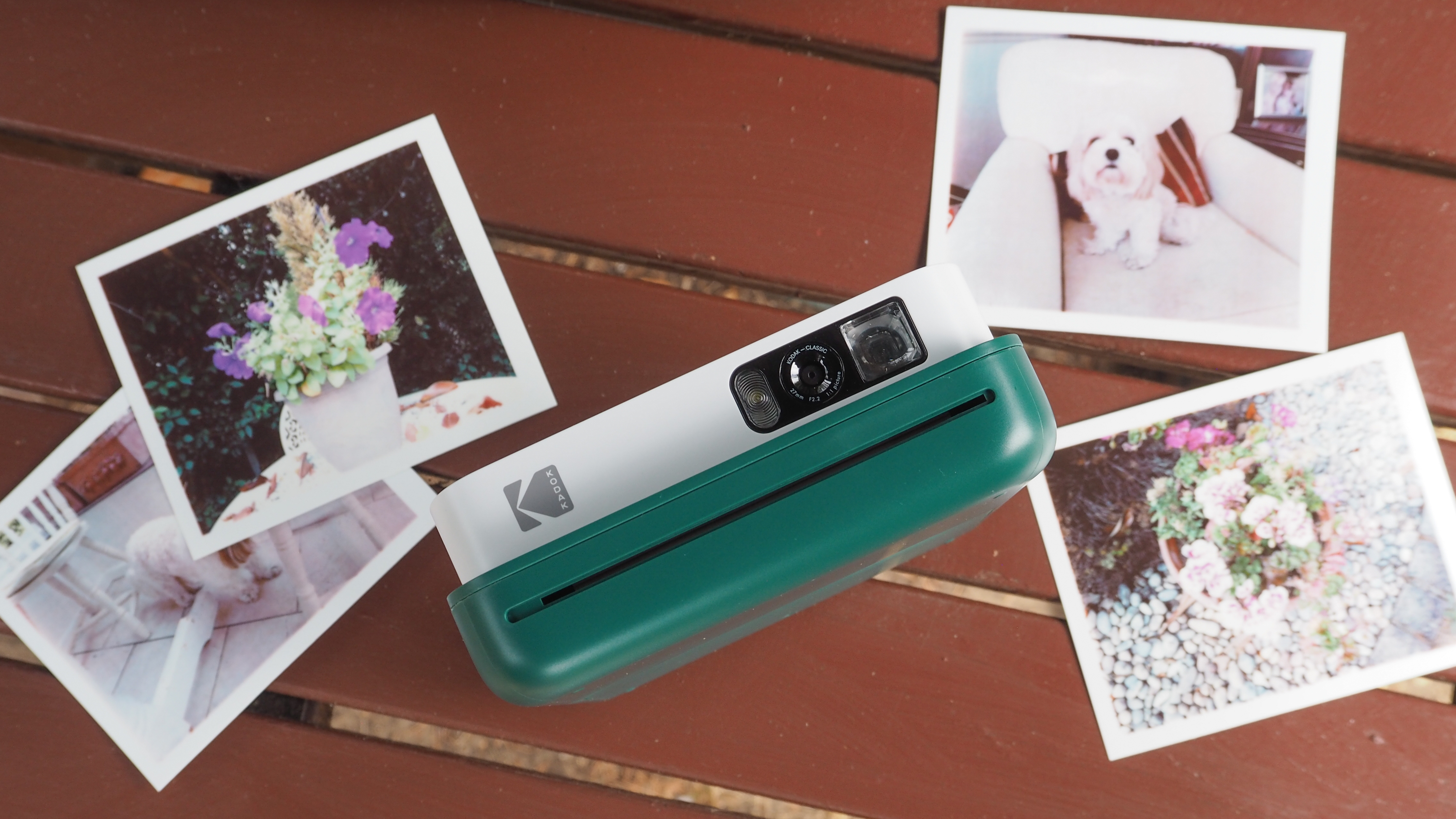
Like all instant print cameras the Kodak Smile Classic is point and shoot all the way. Squeeze the shutter release button – green on our green and white liveried review sample – and, after the camera has thought about it for a while, there is much whirring and grinding of internal gears before a sheet of the pre-loaded paper begins to slowly and very familiarly emerge from a narrow slit in the front of the device.
Zero Ink – ‘Zink’ – prints resemble slightly fuzzy low resolution video grabs with some visible banding and bleached colors – the hit and miss results somewhat reminiscent of the experimental look of prints from cheap Lomography film cameras. Don’t go into this expecting perfection in other words. In fact, imagine a photocopy of an image and you’ll have a pretty close impression of the quality of output here, so for us the Instax paper packs utilized by Fujifilm and Lomography devices, while themselves not perfect, have the edge in terms of visual impact. The Kodak’s internal battery provides sufficient power for up to 35 sequential prints, which is so-so. But of course in practice most of us would not be looking to shoot and print that many images in one go.
Ultimately then, this is best viewed as a fun gadget for the young to create personalized photo booth type stickers with, rather than a dedicated photographer’s tool.
Verdict
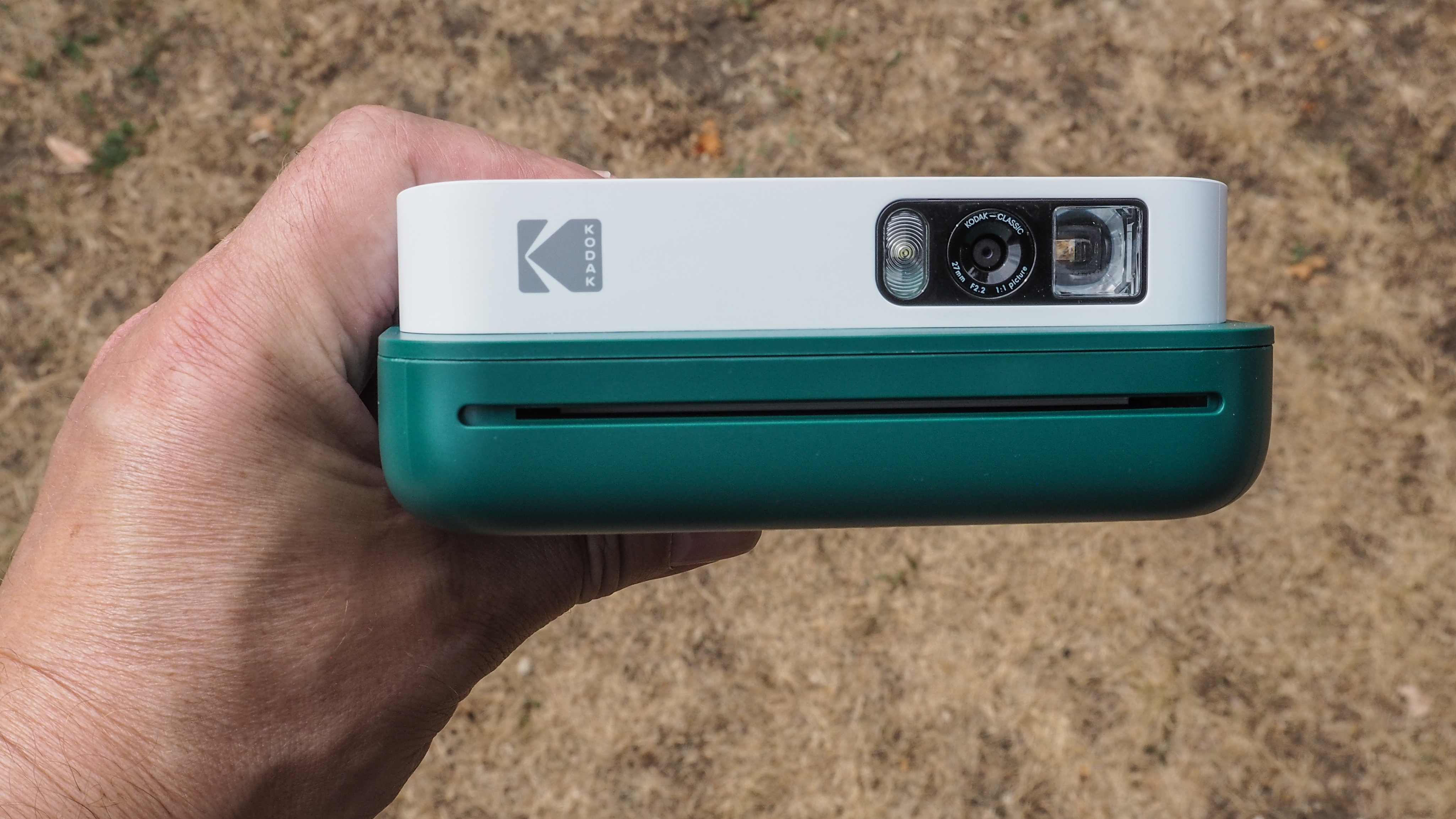
Despite the obvious old school retro design and operation, the Kodak Smile Classic has more connectivity options going for it than the average instant print camera, as well as physically larger prints that are instantly dry-to-the-touch, but be aware that these self-same instant prints have the visual quality of photocopies – meaning images lack definition and contrast, plus colors have a bleached look. In short, don’t invest in this one expecting lab quality prints.
Not without charm, we can see this camera being a fun gift to occupy the very young or the curiously young-at-heart for a few minutes. Ultimately though, due to prints made from images taken with the camera lacking in crispness and displaying banding, the Kodak Smile Classic probably won’t be considered the future classic its name suggests, nor be as fondly remembered as the truly vintage models that inspired it.
Read more
Best instant cameras
Cheap instax film deals
Best instax camera cases
Best digital instant cameras & hybrid cameras
Best Lomography cameras
The best Instax photo albums
Gavin has over 30 years’ experience of writing about photography and television. He is currently the editor of British Photographic Industry News, and previously served as editor of Which Digital Camera and deputy editor of Total Digital Photography.
He has also written for a wide range of publications including T3, BBC Focus, Empire, NME, Radio Times, MacWorld, Computer Active, What Digital Camera and the Rough Guide books.
With his wealth of knowledge, Gavin is well placed to recognize great camera deals and recommend the best products in Digital Camera World’s buying guides. He also writes on a number of specialist subjects including binoculars and monoculars, spotting scopes, microscopes, trail cameras, action cameras, body cameras, filters and cameras straps.
